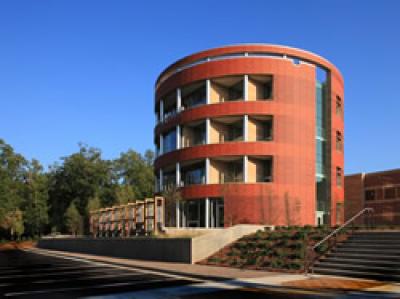
Center Celebrates Hunt's $64B Biotech Vision
 Thirty years ago, textiles, tobacco and furniture drove North Carolina’s economy. As each of these industries lost jobs to improved technology and cheaper overseas labor, a new industry – biotechnology – was emerging.
Thirty years ago, textiles, tobacco and furniture drove North Carolina’s economy. As each of these industries lost jobs to improved technology and cheaper overseas labor, a new industry – biotechnology – was emerging.
Gov. James B. Hunt, Jr. and other state leaders recognized the enormous impact that this new technology could make on the state’s economy, and they began to build a broad foundation for the industry by supporting the research, business and education programs across the state.
Their early work paid off.
Today 57,000 people work at 530 companies in North Carolina. Including ripple effects, the industry contributes $64.6 billion to the state’s economy and supports more than 226,000 jobs.
“North Carolina is the third-largest state for biotechnology, and one of the most rapidly growing,” said Norris Tolson, President and CEO of the Biotechnology Center.
“With Gov. Hunt’s early vision, we were able to build a strong foundation for biotechnology to thrive. His foresight – and our head start – is the envy of many states and countries today.”
The Biotechnology Center celebrated this vision at a dedication ceremony today, naming its new addition the James B. Hunt, Jr. Leadership Annex. The 20,000-square-foot building will support the industry’s changing needs as it enters its next growth phase across the state.
As part of the Biotechnology Center’s headquarters site, the Hunt Annex will provide meeting space for the state’s growing industry and will welcome about 35,000 visitors a year from around the world. The expanded program space will support Center initiatives in entrepreneurship, technology commercialization, business development, university research and workforce development.
A New Economic Driver
According to a report by Battelle, the biotechnology industry is a significant contributor to the state’s economy. Biotechnology:
- Brings $64.6 billion annually into the state’s economy.
- Generates 226,000 jobs.
- pays $9.4 billion every year in employment compensation.
- Contributes $1.9 billion in taxes each year to state and local government.
The Battelle Report, an update of the 2008 document Evidence and Opportunity, noted the success and strength of North Carolina’s broad approach to the technology-based economic development. The report also discusses the potential of biotechnology to solve many of the world’s top problems. In North Carolina, our diverse statewide landscape is giving rise to applications of biotechnology in agriculture, medicine, marine research, fuel and more. Biotechnology’s application to many sectors is the key to its growth statewide, which the Center supports with offices in Asheville, Charlotte, Greenville, Wilmington and Winston-Salem, in addition to the RTP headquarters.
The update and the original full report from Battelle are available here.
The source of North Carolina’s success, in addition to getting started early, is the willingness of people across the state to collaborate to put together the resources necessary for growth. The $10.1 million Hunt Annex is yet another example of the public/private partnerships North Carolina builds to create opportunity. About 70 percent of the building’s cost has been contributed by the state and private donors.
To reflect the broadening applications of biotechnology and to better serve the growing statewide community, the Center redesigned its main website at www.ncbiotech.org. The site launched today as part of the Hunt Annex festivities, and features the stories behind the state’s progress in business development, workforce and education, research and innovation and the science of biotechnology. The new site connects people around the world with the people and resources that make North Carolina a world leader in biotechnology.
The Biotechnology Center is a private, non-profit corporation supported by the N.C. General Assembly. Its mission is to provide long-term economic and societal benefits to North Carolina by supporting biotechnology research, business, education and strategic policy statewide.
